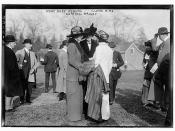The stage drama No Sugar, by Jack Davis explores the bad treatment of minority groups and their responses to this treatment. The performance set in the 1930's presents the Milimurra family who are the minority group fighting against the injustices inflicted on them by white authorities. No Sugar provides a voice for the aboriginal people, confronts European Australians with the past, restores Aboriginal culture and pride and explored the value of equality. All these ideas are used as a way to convey its message to the audience.
It appears that the stage performance of No Sugar provides the Aboriginal people with the voice they have lived without for decades. The Milimurra family are used in the play to represent the voice of the Aboriginal people who stand up against white authority. Milly and Gran who refuse to give in without a fight, go to the Sergeant and confront him about the reasons why their rations have been cut, and push for him to provide them with blankets.
Characters such as Topsy and Billy are representations of those Aborigines who did not fight for their rights. These characters bowed down to white authority, Billy who does not speak his own language, but broken English is happy to work for the white authorities tracking down members of his own race who escape their clutches. Milly's response to the Sergeant when he tells her that her problem is she has three grown men budging off her, who are too lazy to work, is by asking him "Where they gonna get work?" she asks the Sergeant "Do you want em to work for nothing?" and Gran backs her up by saying "Their not slaves you know Chargent!" The staging is also used as an added technique to provide the aboriginal people with a...


